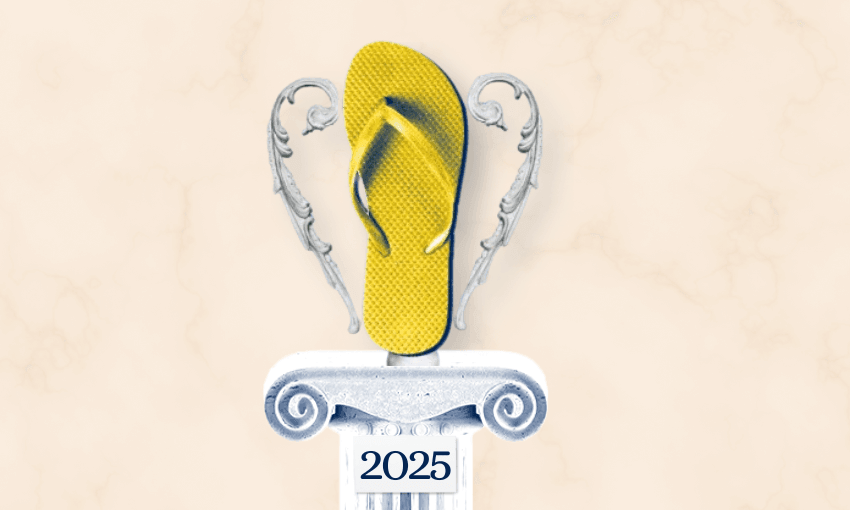New Zealand’s second Emissions Reduction Plan has just been finalised, with eight key policies and a ‘technology-led’ approach. Shanti Mathias takes a look.
This is an updated version of a piece that was published in July, when the draft Emissions Reduction Plan was released
OK, so… what’s an Emissions Reduction Plan?
New Zealand has made a bunch of promises in international agreements and in the landmark Zero Carbon Act that aim to reduce our emissions. This goal is broken down into step-by-step emissions budgets, which determine the maximum quantity of greenhouse gas emissions allowed during a five-year period.
New Zealand’s first emissions budget was set for 2022-2025 – a shorter period, because the legislation had only just come into place. The next two emissions budgets, for 2026-2030 and 2031-2035, have already been set; in general, emissions budgets need to be released a decade in advance so everyone has time to prepare. Set by the government, they’re legally binding, and three (the current one plus two future ones) must be in place at all times.
Emissions budgets are accompanied by Emission Reductions Plans (ERPs), which explain the tangible actions the government is taking to meet the emissions budgets. The first ERP was set by the Labour government in 2022. On Wednesday, the government released the final version of the second ERP.
Got it. So how did we do on the first one?
Well, the good news is that our emissions have decreased slightly: there’s a bit of a delay in processing the data, but we know that in 2022, New Zealand produced the lowest gross emissions of any year in the 21st century, at 78 megatonnes of carbon dioxide equivalent. (To put things in perspective, the Ministry for the Environment notes that a tonne of emissions is about equivalent to driving from Auckland to Wellington nine times; multiply that by 78 million to get 78 megatonnes).
In 2023, emissions did increase slightly, partially because of an increase in transport emissions from domestic flights and road freight. (We don’t count international flights in our emissions.)
However, many of the reductions happened because of policies that the previous government put in place, like the Clean Car Discount. Assumptions about future emissions also took into account pledges to eventually incorporate agriculture, our biggest emitter, into the Emissions Trading Scheme, which the National-led coalition has ruled out, and policies like changing speed limits will increase pollution too.
While the draft second Emissions Reduction Plan showed that New Zealand would not fit into our climate budgets, the final version shows an overshoot of only 9.2 megatonnes of carbon dioxide equivalent, and the possibility of reaching net zero by 2044, six years earlier than the 2050 goal. However, it’s worth remembering that these predictions can be imprecise. As former chair of the Climate Change Commission Rod Carr told Newsroom on Tuesday: “Just planning to meet a budget with a whisker is not really a plan that seems credible because things will happen that you can’t foresee.”
While this is the final version of this emissions plan, the work will continue. The independent Climate Change Commission has already advised that the 2050 target be made more ambitious, that international shipping and aviation emissions be included in accounting, and the the fourth emissions budget cut emissions by more than half 2022 levels, which would take place in the 2030s.
So the government has changed the approach towards the climate – what does this new plan say it will do?
In the second Emissions Reduction Plan, there are eight key policies: an EV charging network, including agriculture in emissions pricing, minimising waste and capturing gas from landfill, private sector partnerships to add forests to Crown-owned land, capturing harmful refrigerant gases, more renewable energy projects, and carbon capture and storage. The plan describes this as a “technology-led approach”. “We can have affordable and secure clean energy, an efficient competitive agriculture sector, and a booming economy while meeting our climate change commitments,” said Watts in a press release.
The Zero Carbon Act says that reductions in carbon emissions need to come through domestic activities alone – both reducing carbon and absorbing it. The final version of the plan shows that New Zealand’s net emissions are projected to be 84 megatonnes of carbon dioxide equivalent above the “nationally determined contribution” specified in the Paris Agreement.
While the Emissions Reduction Plan doesn’t mention international carbon credits, it is likely that New Zealand will have to spend billions of dollars to buy them to cover the shortfall in emissions reductions. The urgency of increasing tree planting in New Zealand will prioritise faster-growing pine trees over native trees, an approach that has been criticised.
The finalised version of the plan also relies on the development of carbon capture and storage (CCS) technology that would suck carbon out of the atmosphere. There is no CCS technology currently available at the scale that is required to absorb the volume of carbon humans are generating; the technology is controversial, energy-intense, expensive, and has been called a “dangerous distraction”.
It’s useful to notice what isn’t in the plan, too – 17.5% of New Zealand’s emissions come from energy for transport, for example. But while there’s a focus on lower-emissions heavy vehicles, using hydrogen and "sustainable aviation fuel”, and private investment into electric vehicles, there’s not much mention of public transport, just a list of projects that are already under way, like the City Rail Link, and a mandate for councils to only procure zero-emissions buses from 2025. The plan contains no mention of active transport options like bikes, reducing reliance on private cars, or putting more freight on rail lines rather than trucks.
OK, I’m hearing lots of technical language, lots of numbers, lots of predictions. Can you just tell me whether any of it will work?
Different groups and experts have weighed in with their perspectives on the plan. Some emphasised that the plan assumes that technological development will create emissions reductions.
“This government has consistently allowed big polluters like the agribusiness industry and the fossil fuel industry to write the policy on climate change, and this abject failure of a plan is the result,” said Greenpeace spokesperson Sinéad Deighton-O’Flynn. “There will be consequences for this inaction. We trade on our clean, green reputation. It will become harder for New Zealand to sell milk and other livestock products into markets that are increasingly valuing climate action.”
But others were in favour. Documents released to RNZ under the Official Information Act show the fossil fuel industry supporting the plan. “Your officials should be commended for the practical list of potential policies ... (such as Carbon Capture and Storage) and the long list of discontinued policies ... which were expensive and counterproductive," said Energy Resources Aotearoa in a briefing to Simeon Brown, as reported by Eloise Gibson.
Remind me again please what the stakes are?
Global heating means the average global temperature has been more than 1.5 degrees above pre-industrial levels for over a year. New Zealand’s sea temperatures have warmed more than twice as fast as the global average, impacting the entire marine ecosystem. Thousands of homes in Wellington alone are at risk from sea level rise which will make many people’s homes completely uninsurable. Heat-related deaths are projected to increase to 51 per year if global heating reaches 2 degrees above pre-industrial levels, and cause 250,000 more deaths around the world by 2030, putting outdoor labourers and the elderly particularly at risk.
Climate change has already killed millions of people and placed many species at risk. The stakes, in other words, couldn’t be higher.



